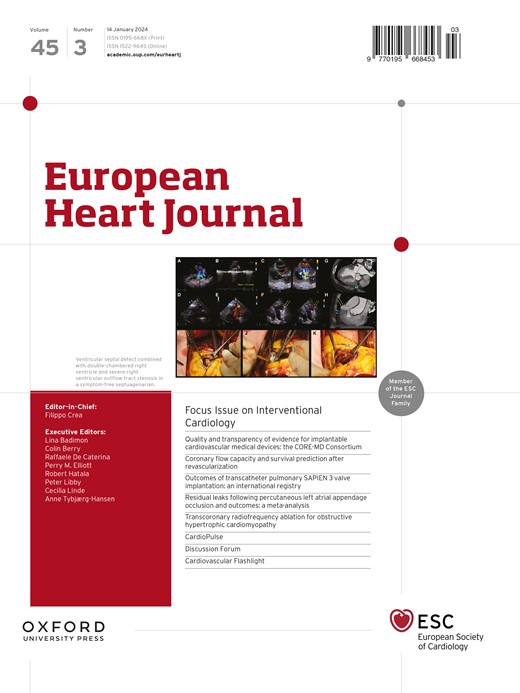Clinical utility and implementation of polygenic risk scores for predicting cardiovascular disease
IF 37.6
1区 医学
Q1 CARDIAC & CARDIOVASCULAR SYSTEMS
引用次数: 0
Abstract
Genome-wide association studies have revealed hundreds of genetic variants associated with cardiovascular diseases (CVD). Polygenic risk scores (PRS) can capture this information in a single metric and hold promise for use in CVD risk prediction. Importantly, PRS information can reflect the causally mediated risk to which the individual is exposed throughout life. Although European Society of Cardiology guidelines do not currently advocate their use in routine clinical practice, PRS are commercially available and increasingly sought by clinicians, health systems, and members of the public to inform personalized health care decision-making. This clinical consensus statement provides an overview of the scientific basis of PRS and evidence to date on their role in CVD risk prediction for the purposes of disease prevention. It provides the reader with a summary of the opportunities and challenges for implementation and identifies current gaps in supporting evidence. The document also lays out a potential roadmap by which the scientific and clinical community can navigate any future transition of PRS into routine clinical care. Finally, clinical scenarios are presented where information from PRS may hold most value and discuss organizational frameworks to enable responsible use of PRS testing while more evidence is being generated by clinical studies.求助全文
约1分钟内获得全文
求助全文
来源期刊

European Heart Journal
医学-心血管系统
CiteScore
39.30
自引率
6.90%
发文量
3942
审稿时长
1 months
期刊介绍:
The European Heart Journal is a renowned international journal that focuses on cardiovascular medicine. It is published weekly and is the official journal of the European Society of Cardiology. This peer-reviewed journal is committed to publishing high-quality clinical and scientific material pertaining to all aspects of cardiovascular medicine. It covers a diverse range of topics including research findings, technical evaluations, and reviews. Moreover, the journal serves as a platform for the exchange of information and discussions on various aspects of cardiovascular medicine, including educational matters.
In addition to original papers on cardiovascular medicine and surgery, the European Heart Journal also presents reviews, clinical perspectives, ESC Guidelines, and editorial articles that highlight recent advancements in cardiology. Additionally, the journal actively encourages readers to share their thoughts and opinions through correspondence.
 求助内容:
求助内容: 应助结果提醒方式:
应助结果提醒方式:


